
The May 18th Memorial Monument: A Testament to Resilience
Explore the May 18th Memorial Monument in Gwangju, a poignant historical landmark commemorating the fight for democracy and human rights in South Korea.
The May 18th Memorial Monument in Gwangju stands as a powerful tribute to the struggle for democracy and human rights in South Korea. This historical landmark commemorates the Gwangju Uprising, an event that shaped the nation's path toward freedom and justice. Visitors can explore the monument's evocative sculptures and learn about the pivotal moments that took place here through informative displays.
A brief summary to May 18th Memorial Monument
- Minju-ro, Buk-gu, Gwangju, KR
- +8262-268-0518
- Visit website
Local tips
- Visit during the early morning or late afternoon to avoid crowds and truly absorb the atmosphere.
- Take time to read the informative plaques to fully appreciate the historical significance of the events commemorated here.
- Consider joining a guided tour for deeper insights into the Gwangju Uprising and its impact on South Korea.
- Check for any special events or memorial ceremonies that may be taking place during your visit.
Getting There
-
Bus
From Gwangju Bus Terminal, take bus number 518 or 118. You can find the bus stop to board the bus just outside the terminal. The journey will take approximately 30 minutes. Get off at the 'Minju-ro' stop, which is close to the May 18th Memorial Monument. From the bus stop, walk north on Minju-ro for about 5 minutes until you see the monument on your right.
-
Subway
Head to Gwangju Subway Line 1 and board the train at Gwangju Station. Travel towards the 'Daein' direction and get off at the 'Gwangju National University of Education' station (4 stops). Exit the station and turn left. Walk straight for about 10 minutes until you reach Minju-ro. Turn right, and you will find the May 18th Memorial Monument a short distance ahead on your left.
-
Taxi
If you prefer a more direct route, you can take a taxi from anywhere in Gwangju. Simply tell the driver 'May 18th Memorial Monument' or show them the address: Minju-ro, Buk-gu, Gwangju. The ride should take around 15-20 minutes depending on traffic. Be sure to have cash or a card ready for payment.
-
Walking
If you are staying in the Buk-gu area, the May 18th Memorial Monument is within walking distance for many. Start at the nearest landmark or your accommodation and head towards Minju-ro. The monument is located at Minju-ro, Buk-gu, Gwangju, and is a notable historical site, making it easy to locate. Walk along the road, and you should see the monument as you approach.
Discover more about May 18th Memorial Monument
Iconic landmarks you can’t miss
May 18th Memorial Monument
0.0 km
Explore the May 18th Memorial Monument in Gwangju, a poignant historical landmark commemorating the fight for democracy and human rights in South Korea.
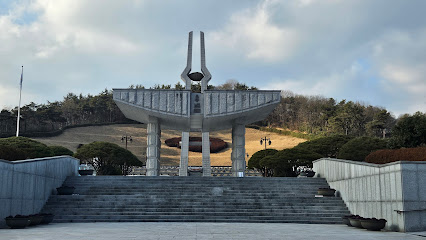
May 18th National Cemetery
0.2 km
Explore the May 18th National Cemetery in Gwangju, a poignant tribute to the fight for democracy in South Korea and a place for reflection and remembrance.
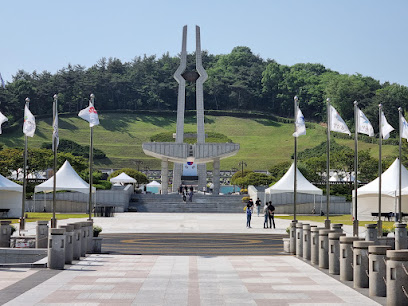
김용학 가옥
6.9 km
Immerse yourself in the rich history and cultural heritage of Gwangju at the stunning Gwangsan Cultural Heritage Site.
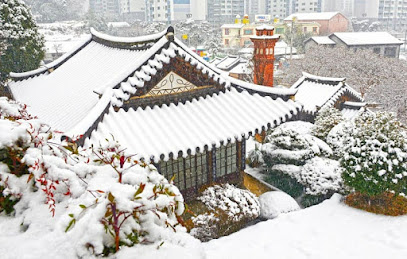
Gwangju Culture & Arts Center
8.3 km
Discover the cultural gem of Gwangju, where performing arts and visual creativity come alive at the Gwangju Culture & Arts Center.
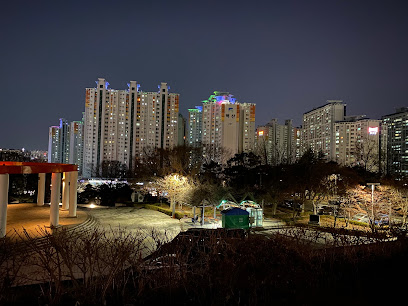
광주 야구의 거리
8.8 km
Explore the tranquil beauty of Seorim-ro in Gwangju, a stunning tourist attraction perfect for nature lovers and a serene escape.

Owolgil
9.0 km
Discover Owolgil, a historical landmark in Gwangju that encapsulates the essence of Korea's rich cultural heritage and history.

Daein Market
9.4 km
Explore the vibrant Daein Market in Gwangju, a cultural hotspot for delicious street food, unique crafts, and local traditions.
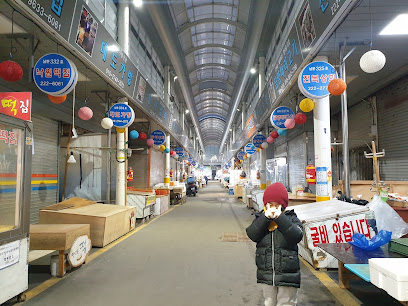
May 18 Historical Site no.29(Old Residence of Hong Namsun)
9.7 km
Explore the May 18 Historical Site No.29 in Gwangju, a poignant history museum that honors the city's democratic struggles and resilience.
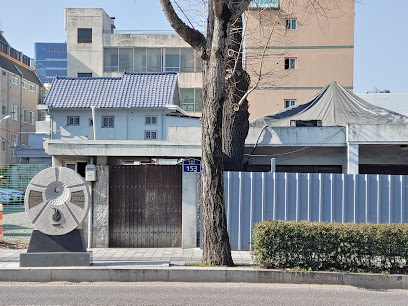
Gwangju Yangdong Market
9.8 km
Experience the vibrant culture and culinary delights of Gwangju at Yangdong Market, a must-visit for food lovers and culture seekers alike.
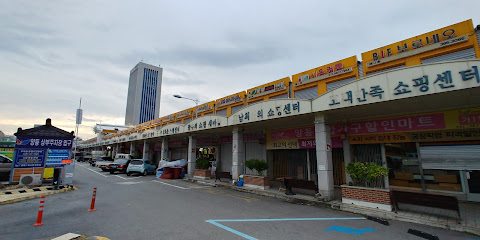
Gwangju Castle
10.1 km
Explore the historic Gwangju Castle, a serene landmark offering glimpses of Korea's rich heritage and picturesque surroundings in Gwangju.
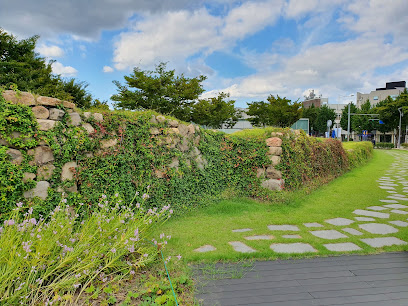
광주향교
10.4 km
Discover Gwangju's Historical Landmark, a cultural gem that showcases the rich heritage and history of this vibrant South Korean city.
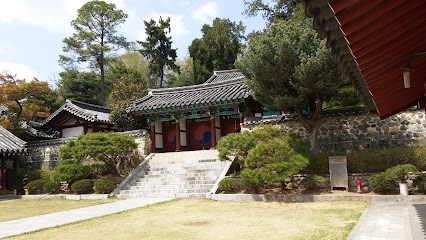
원효사
10.7 km
Experience the tranquility of Wonhyosa Temple, a serene Buddhist haven in Gwangju, perfect for reflection and cultural immersion.
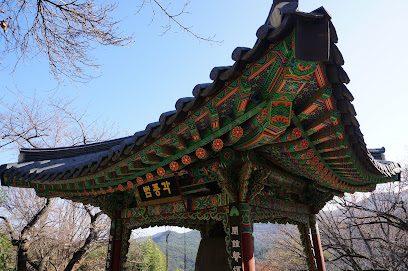
Sajik Park Sajikdan Altar
10.7 km
Explore the serene Sajik Park Sajikdan Altar in Gwangju, a peaceful shrine surrounded by lush nature, perfect for reflection and cultural immersion.
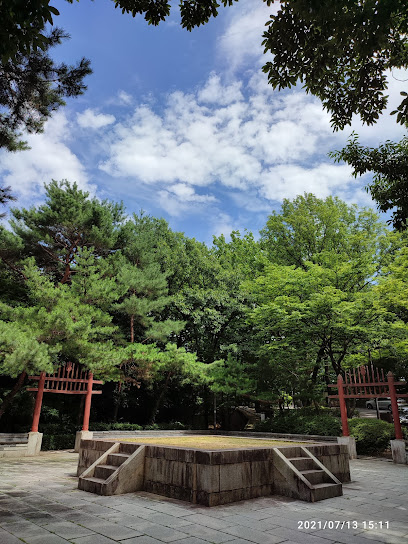
Honam Theological University and Seminary
11.0 km
Explore the serene Honam Theological University and Seminary, a unique destination for cultural enrichment and spiritual reflection in Gwangju, South Korea.
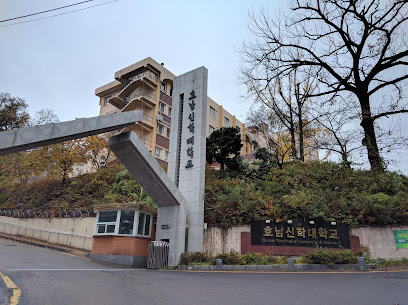
수완동왕버들
11.0 km
Discover the historical charm of Suwan-dong in Gwangsan-gu, where Korea's rich heritage and vibrant culture come to life.
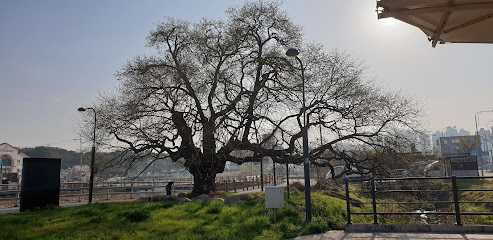
Unmissable attractions to see
Gwangju Family Land
4.5 km
Discover the excitement of Gwangju Family Land, an amusement park filled with thrilling rides and family-friendly attractions in Gwangju, South Korea.
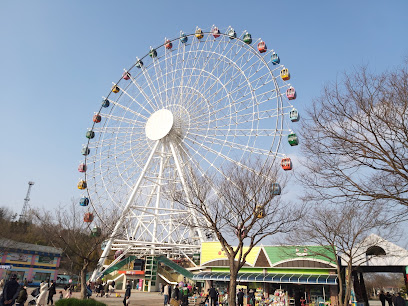
광주광역시 우치공원
4.7 km
Discover the beauty of nature and thrills of amusement at Uchi Park, Gwangju's premier botanical garden and fun park destination.
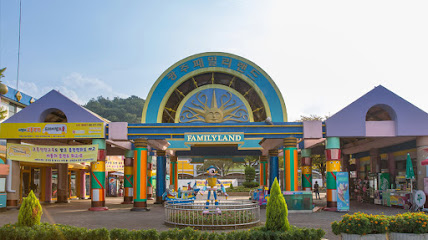
Myeongokheon Wonrim Garden
5.6 km
Discover the tranquil beauty and rich history of Myeongokheon Wonrim Garden in Damyang, Jeollanam-do, a perfect escape for nature lovers and history enthusiasts.
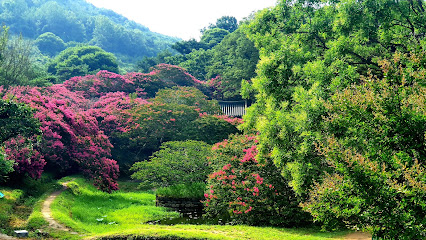
Myeonangjeong Pavilion
5.8 km
Explore the tranquility of Myeonangjeong Pavilion, a serene escape in Damyang-gun, where nature, culture, and history blend seamlessly.
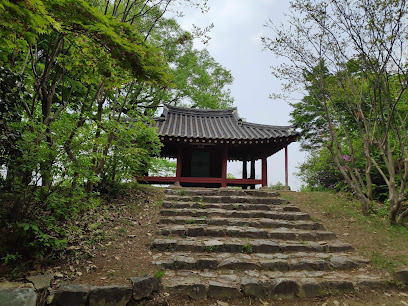
Gwangjuho
6.9 km
Explore the serene Gwangjuho nature preserve in Jeollanam-do, where lush landscapes and tranquil waters create the perfect escape into nature's embrace.

Slow City, Samjinae Village
7.2 km
Experience the charm of Slow City, Samjinae Village, a serene retreat in Jeollanam-do, embracing culture, nature, and the art of slow living.
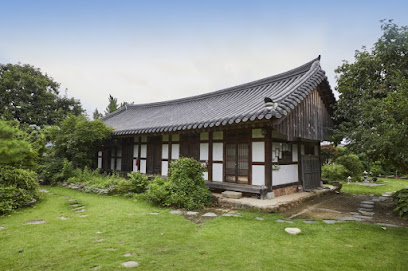
Gwangju National Museum
7.3 km
Discover Korea's cultural heritage at Gwangju National Museum, a must-visit destination for art and history lovers in Gwangju.
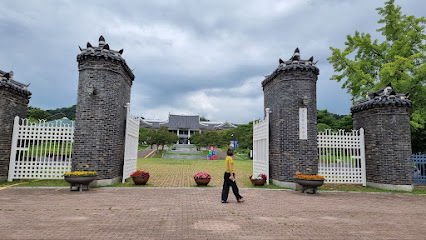
Gwangju History & Folk Museum
7.4 km
Uncover the rich heritage of Gwangju at the Gwangju History & Folk Museum, a captivating destination for culture enthusiasts.
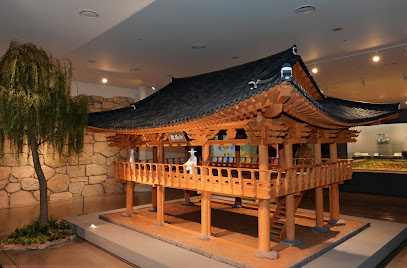
Gwangju Museum of Art
7.6 km
Discover the Gwangju Museum of Art, a cultural treasure in South Korea showcasing contemporary and traditional artworks in a stunning architectural setting.
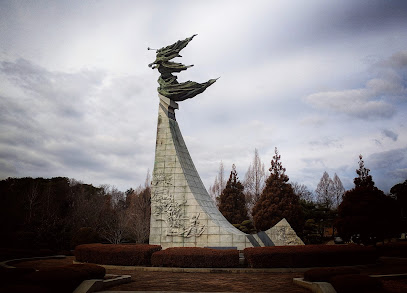
Jungwoe Park
8.0 km
Explore Jungwoe Park in Gwangju, a peaceful city park filled with lush greenery, vibrant culture, and serene walking paths for a perfect day out.

Gwangju National Science Museum
8.1 km
Discover the wonders of science at Gwangju National Science Museum, a family-friendly attraction with interactive exhibits and engaging experiences for all ages.

The Gwangju Ecological Lake Park
8.1 km
Explore the lush beauty of Gwangju Ecological Lake Park, a serene escape featuring walking trails, a tranquil lake, and vibrant flora in Buk-gu.
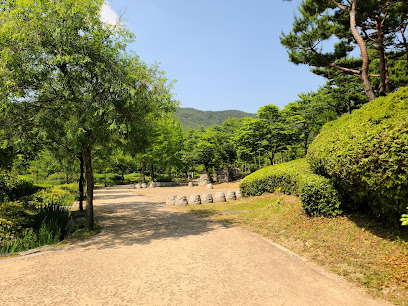
Hwanbyeogdang
8.1 km
Explore Hwanbyeogdang, a cultural treasure in Gwangju, offering a journey through history, art, and tranquility amidst stunning traditional architecture.
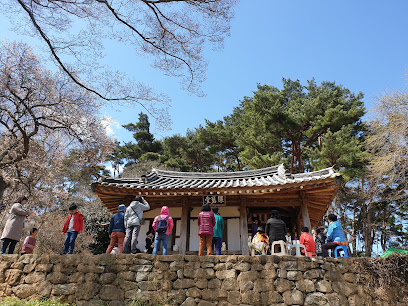
Ssangam Park
8.7 km
Discover the natural beauty and tranquility of Ssangam Park in Gwangju, South Korea - a perfect escape for tourists seeking relaxation and fresh air.
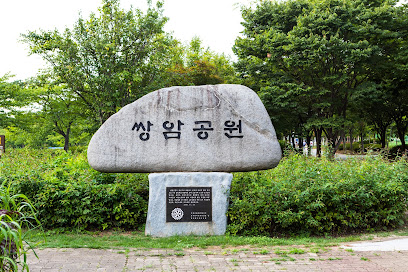
Korea Bamboo Museum
8.8 km
Discover the unique heritage of bamboo at the Korea Bamboo Museum, showcasing art, culture, and sustainability in stunning displays.
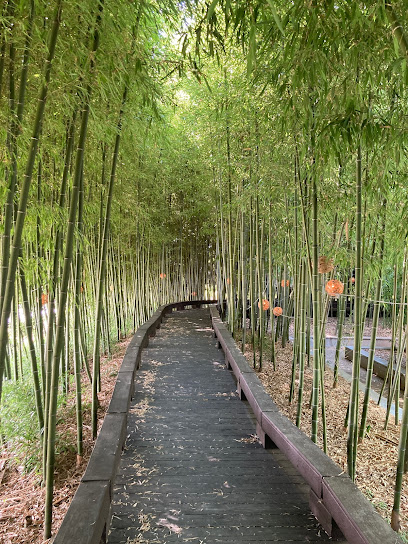
Essential places to dine
Choegolu
5.0 km
Experience authentic Chinese flavors at Choegolu in Gwangju – a culinary gem offering exquisite dishes in a welcoming atmosphere.

머찌네
5.4 km
Discover authentic Korean flavors at 머찌네 in Gwangju's Buk-gu – where culinary tradition meets modern dining.

불로만바베큐
5.7 km
Experience Gwangju's culinary delight at 불로만바베큐 - where every bite of grilled chicken tells a story.

Wa
5.7 km
Experience authentic Korean cuisine at Wa in Gwangju, where tradition meets flavor in every dish.

Restaurant
5.7 km
Explore authentic Korean flavors at this charming restaurant in Gwangju's Buk-gu district, where every dish tells a story.

예향푸드
5.7 km
Discover authentic Korean flavors at 예향푸드 in Gwangju - a must-visit for food lovers seeking traditional culinary experiences.

아침이슬
5.9 km
Discover authentic Korean flavors at 아침이슬 in Gwangju's Buk-gu – where tranquility meets tradition in every delicious bite.

Raj indian restaurant, Chonnam Univ. branch
7.2 km
Experience the rich flavors of India at Raj Indian Restaurant in Gwangju – where authentic cuisine meets warm hospitality.

Young-mi Restaurant
8.9 km
Experience authentic Korean cuisine at Young-mi Restaurant in Gwangju - where traditional flavors meet modern comfort.
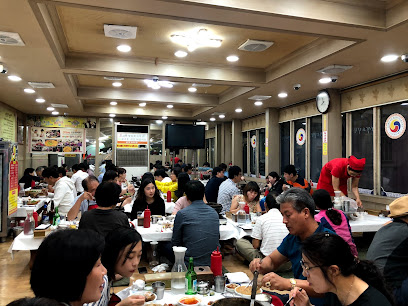
쿠바하우스 한식뷔페
9.6 km
Experience authentic Korean flavors at Cuba House Korean Buffet in Gwangju - where every meal tells a story.
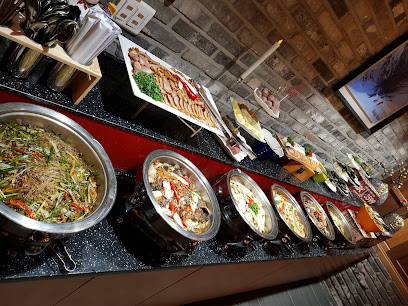
매드포갈릭 광주광천점
9.8 km
Discover the exquisite fusion of Italian cuisine and garlic at Mad for Garlic in Gwangju—where every dish tells a flavorful story.

Mimiwon
10.0 km
Discover authentic Korean cuisine at Mimiwon in Gwangju, where traditional flavors meet exceptional service in a vibrant atmosphere.
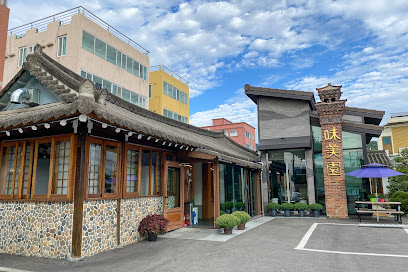
타오레스토랑
10.0 km
Experience authentic Southern Italian cuisine at 타오레스토랑 in Gwangju - where every meal feels like a trip to Italy.

Minsokchon
10.2 km
Savor authentic Korean ribs at Minsokchon in Gwangju - a culinary delight steeped in tradition and flavor.

First Nepal Resturant
10.2 km
Discover authentic Nepali flavors at First Nepal Restaurant in Gwangju – where every dish tells a story.
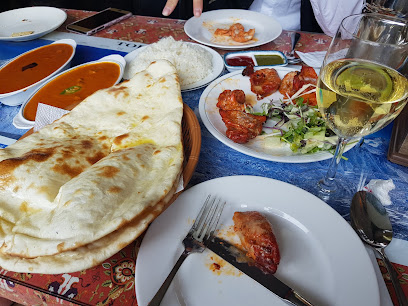
Markets, malls and hidden boutiques
꼬롱이네 소품샵
6.6 km
Explore the charm of Gwangju with unique gifts and handcrafted treasures at 꼬롱이네 소품샵, your go-to spot for memorable souvenirs.

Beautiful Store Gwangju Branch
8.4 km
Explore the Beautiful Store Gwangju Branch: A sustainable second-hand shopping haven where every purchase contributes to social welfare.

Montblanc Boutique Lotte Gwangju
9.4 km
Explore the luxurious world of Montblanc in Gwangju – a premier destination for fine writing instruments, leather goods, and exquisite watches.

BVLGARI
9.4 km
Experience the pinnacle of luxury shopping at BVLGARI in Gwangju, where exquisite jewelry meets impeccable style and craftsmanship.

Gucci - Lotte Gwangju Department Store
9.4 km
Discover the luxury of Gucci at Lotte Gwangju Department Store, where fashion, elegance, and timeless style come together for an unforgettable shopping experience.

Lotte Department Store, Gwangju Branch
9.4 km
Discover a shopping paradise at Lotte Department Store, Gwangju, featuring an array of brands, dining options, and local delicacies.

Market
9.8 km
Explore Gwangju's Market: A vibrant shopping destination rich in local flavors, crafts, and cultural experiences that reflect the heart of Korean life.
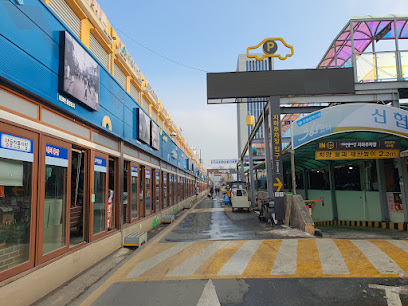
여덟번째 파장(8th wave)
9.8 km
Explore unique home goods at 여덟번째 파장 (8th Wave) in Gwangju, where Korean craftsmanship meets modern design.

Gwangju Shinsegae Department Store
9.9 km
Discover the beauty of South Korea at Gwangju Shinsegae Department Store, a premier destination for cosmetics, perfumes, and luxury beauty products.

Shinsegae Department Store - Gwangju Branch
9.9 km
Discover luxury shopping and local culture at Shinsegae Department Store in Gwangju, where exquisite brands meet delightful dining experiences.

Henry Cotton's Shinsegae - Gwangju
9.9 km
Explore contemporary elegance at Henry Cotton's Shinsegae - Gwangju, where fashion and style come together in a chic shopping experience.

ZARA Gwangju branch
9.9 km
Discover the latest fashion trends at ZARA Gwangju, where style meets affordability in the heart of Dong-gu.
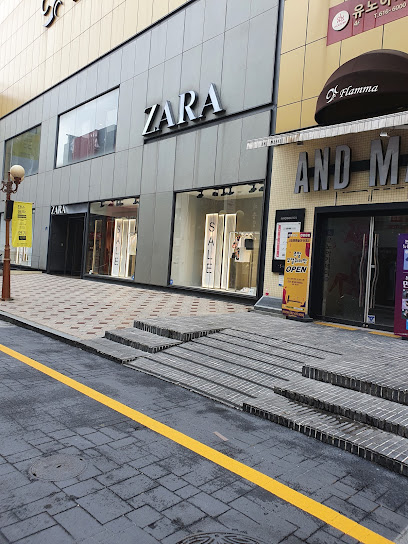
Emporio Armani Gwangju
10.0 km
Explore the epitome of luxury fashion at Emporio Armani Gwangju, where style meets sophistication in the heart of South Korea.

Bottega Veneta Shinsegae Gwangju
10.0 km
Explore luxury and Italian craftsmanship at Bottega Veneta Shinsegae Gwangju, where high fashion meets sophisticated elegance.

나이키 신세계광주점
10.0 km
Explore top-tier athletic wear at the Nike Store in Gwangju, blending style, innovation, and performance for every sports enthusiast.

Essential bars & hidden hideouts
UZAKAYA
6.2 km
Discover the vibrant nightlife at Uzakaya, a bar in Buk-gu, Gwangju, offering creative cocktails and a lively atmosphere for a memorable night out.
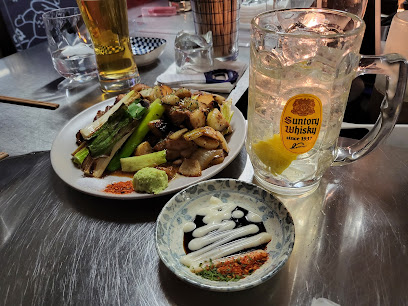
훈이 Beer
6.9 km
Experience the lively ambiance and unique decor of 훈이 Beer, a must-visit pub in Gwangju for beer lovers and nightlife enthusiasts.

Deomdeom
6.9 km
Experience the vibrant cocktail culture of Gwangju at Deomdeom, a cozy bar with creative drinks and a welcoming atmosphere.
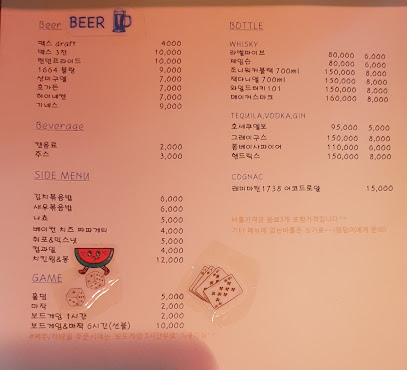
PUB'S
7.0 km
Discover the vibrant nightlife at PUB'S in Gwangju, where friends meet, drinks flow, and unforgettable memories are made.

Mongkeu
7.0 km
Experience Gwangju's nightlife at Mongkeu, a vibrant bar offering local drinks, a lively atmosphere, and the perfect spot for socializing.

크루즈비어
7.0 km
Enjoy local brews and vibrant nightlife at 크루즈비어, a must-visit pub in Gwangju for beer lovers and social butterflies alike.

오프닝비어 (Opening Bear)
7.0 km
Experience the vibrant nightlife and unique drinks at 오프닝비어 in Gwangju's Buk-gu, the perfect bar for tourists to unwind.

Beon
7.0 km
Experience the vibrant nightlife of Gwangju at Beon, a bar that blends local culture with a fantastic drink selection for an unforgettable evening.

BARW
7.1 km
Experience the vibrant nightlife of Gwangju at BARW, where exceptional drinks and a lively atmosphere await every visitor.

so,purple cocktail bar
7.1 km
Discover the vibrant nightlife of Gwangju at so,purple cocktail bar, where expertly crafted cocktails and a lively atmosphere await you.

트라이브 레코드바 Tribe record bar
7.1 km
Discover the vibrant nightlife at Tribe Record Bar in Gwangju, where eclectic music meets a welcoming atmosphere for an unforgettable evening.

y Bar
7.3 km
Discover the lively nightlife of Gwangju at y Bar, a hotspot for locals and tourists alike, offering a rich selection of drinks and vibrant ambiance.

DRUNK
7.8 km
Discover the vibrant nightlife of Gwangju at DRUNK, a lively bar offering a mix of local brews and international cocktails.

Jebseu
7.9 km
Experience the enchanting ambiance and exquisite wine selection at Jebseu, the premier wine bar in Gwangju's Buk-gu district.
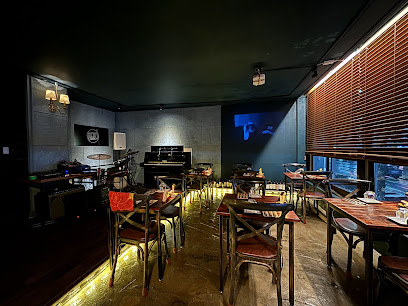
아키올로지
8.5 km
Discover the essence of Gwangju's nightlife at 아키올로지, where expertly crafted cocktails meet a lively atmosphere.




